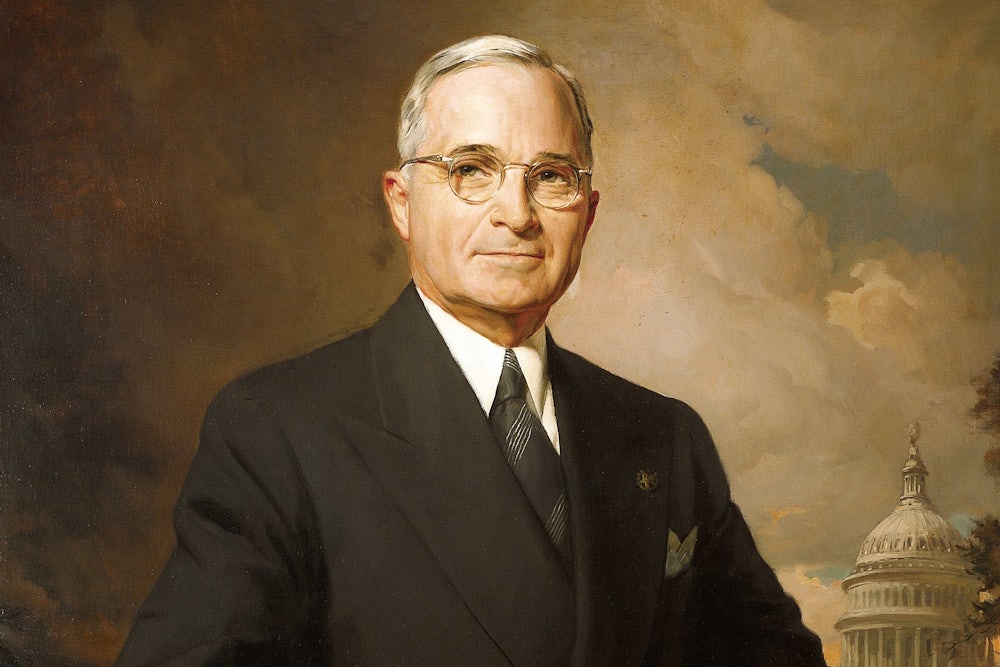You’ve probably heard about how Harry Truman was doomed to lose his presidential reelection bid in 1948, but came back to shocking win through spit, gumption, and lots of fiery speeches from the back of a train caboose. Brendan Nyhan points out that it’s a fairy tale. He came back because the economy caught fire in 1948:
Unfortunately, the dramatic narrative of Truman’s victory and what it tells us about “the American character” doesn’t hold up to scrutiny. As James Campbell pointed out in 2004 (gated), Truman’s comeback was fueled by “sizzling” economic growth:
Until recently, for instance, the Bureau of Economic Analysis (BEA) figured that GDP in the first half of 1948 (leading into the Truman-Dewey contest) was growing at a healthy 4.1% rate. The BEA’s latest series indicates that this greatly understated growth at the outset of the 1948 campaign. The BEA now figures that the economy was growing at a sizzling 6.8%, a revision that helps explain Truman’s miraculous comeback...
Truman actually enjoyed three consecutive quarters of rapid growth in the run-up to the election. Here’s what GDP growth looked like between the second quarter of 1947 (the earliest period for which BEA has quarterly data on growth) and the third quarter of 1948:
Indeed, relative to the rate of growth he enjoyed in the second quarter of an election year, Truman actually slightly underperformed according to this plot by Alan Abramowitz (PDF):
Keep this in mind when reading the endless stream of commentary about what President Obama needs to do to win re-election, and then the post-commentary for years to come about how he moved to the center and therefore won, or rediscovered his fighting liberal spirit and won, or refused to change his liberal message and lost, or failed to find his populist voice and lost. About 80% of the question is what happens to the economy. The rest matters only at the margins.
